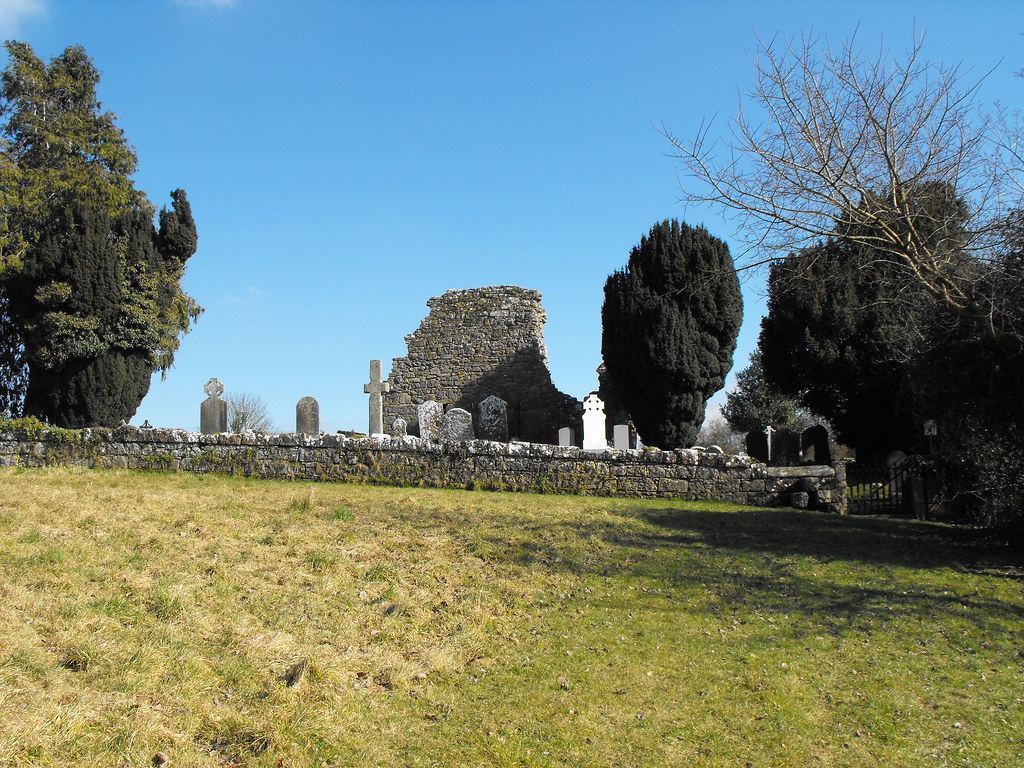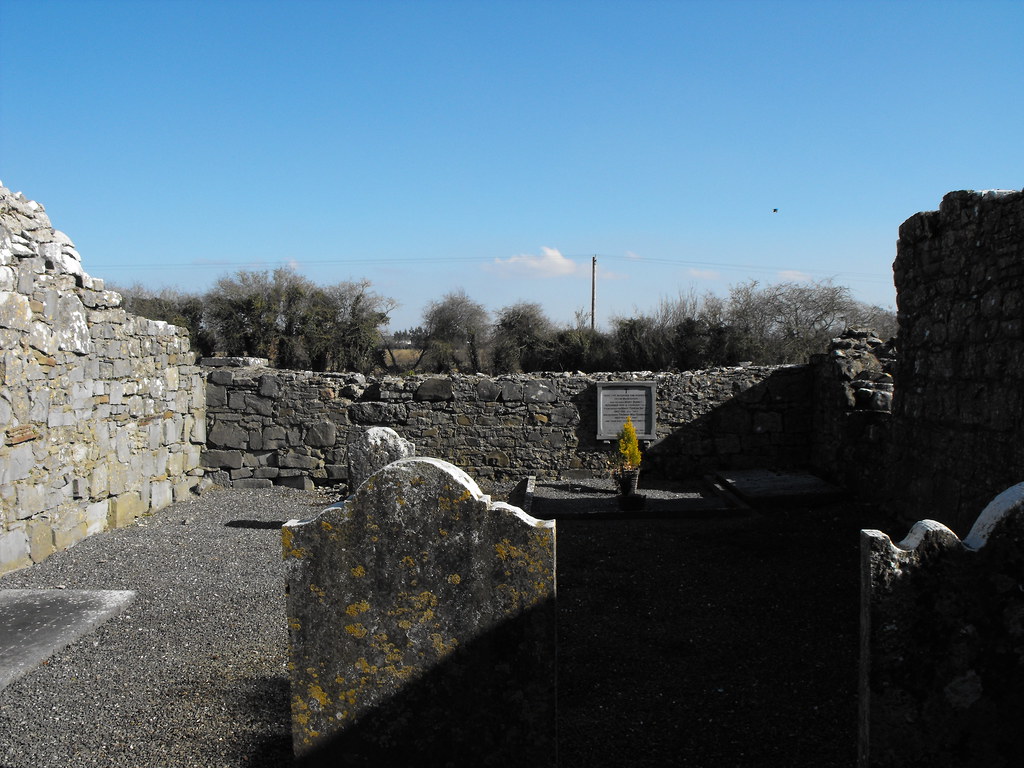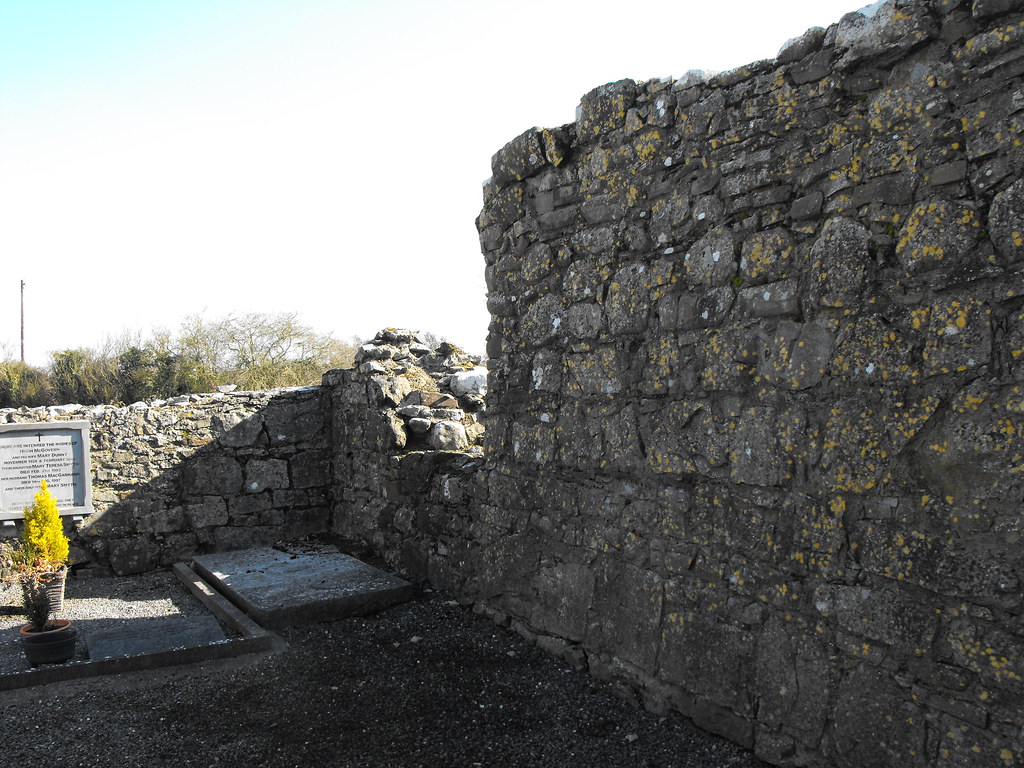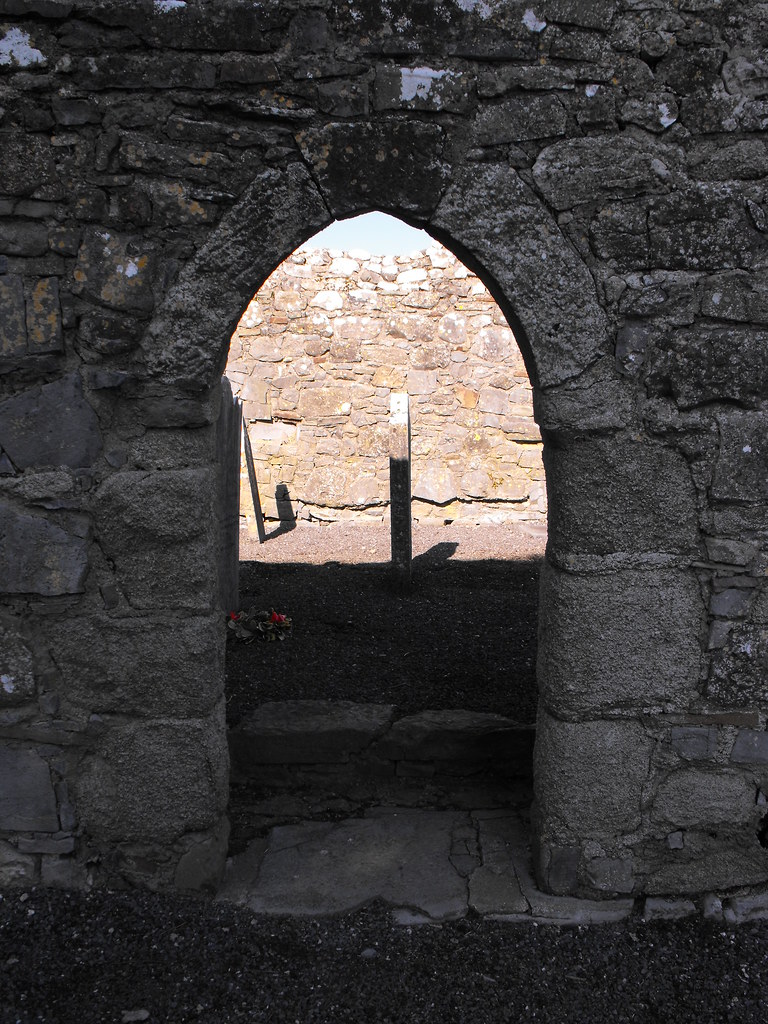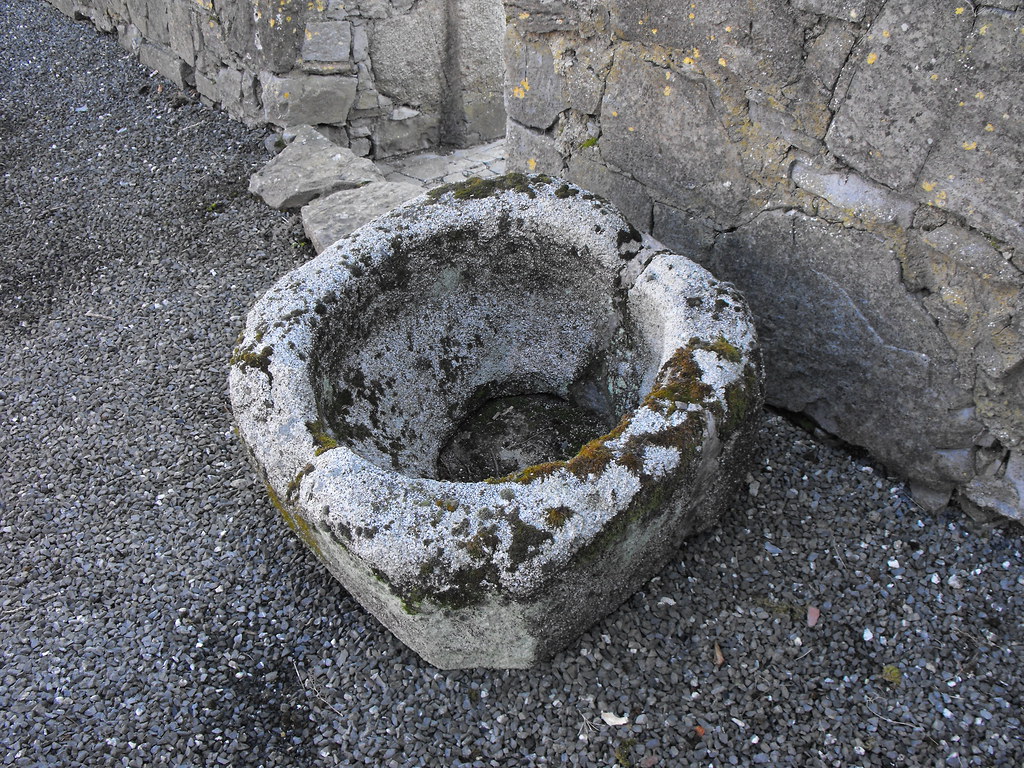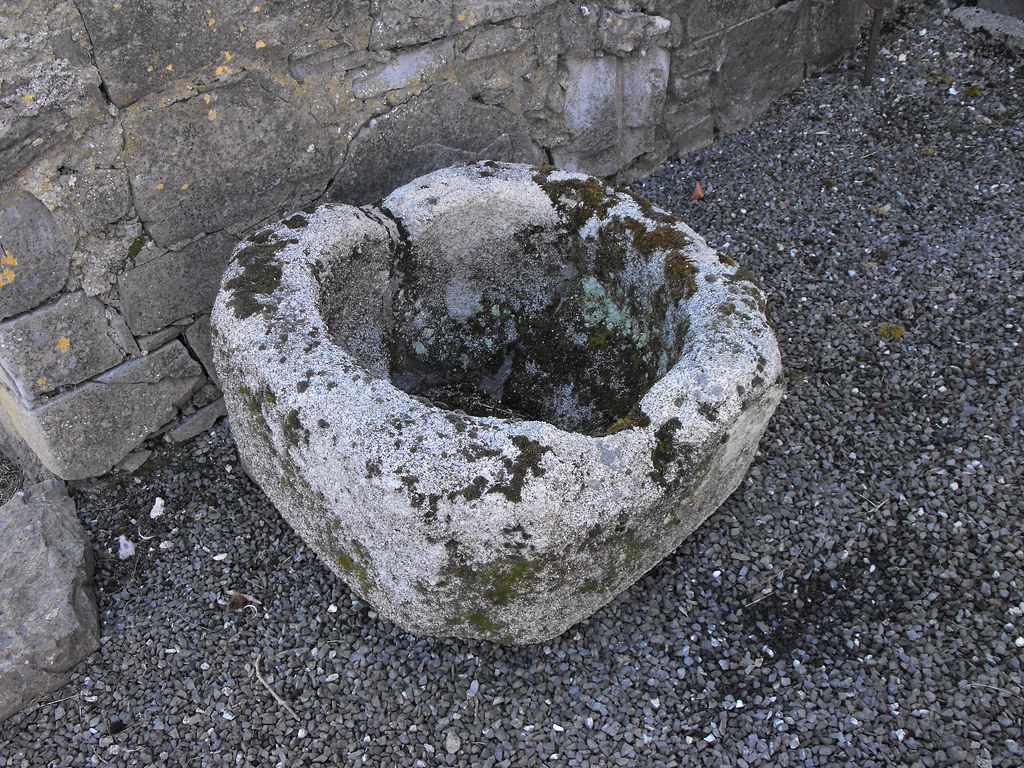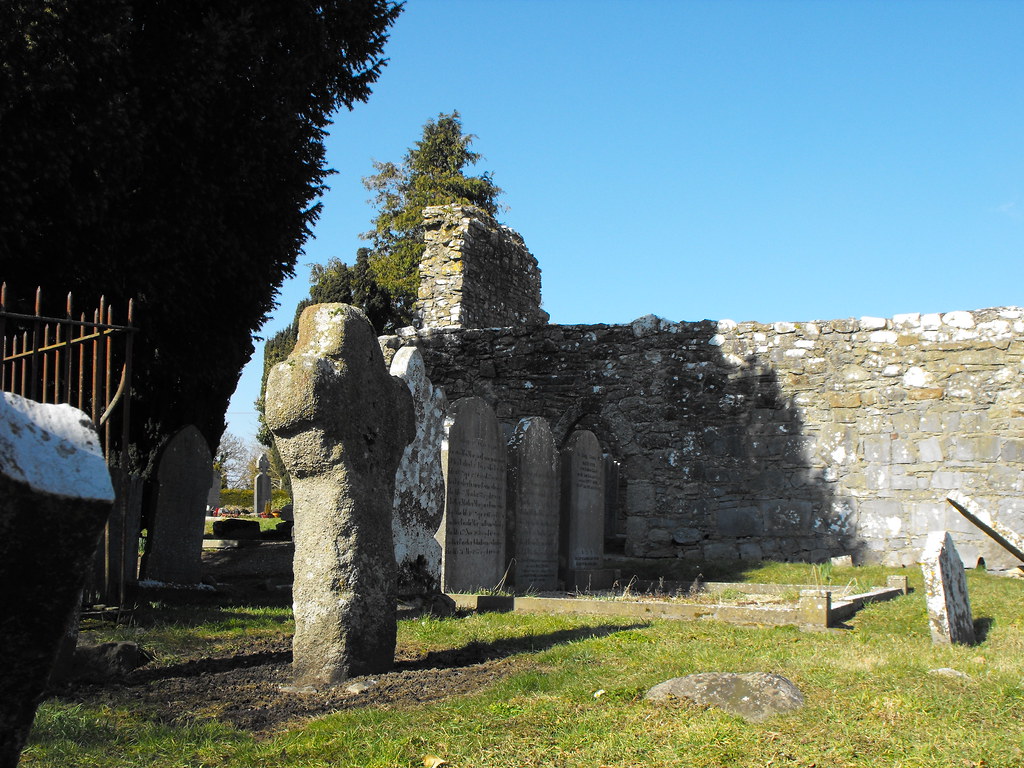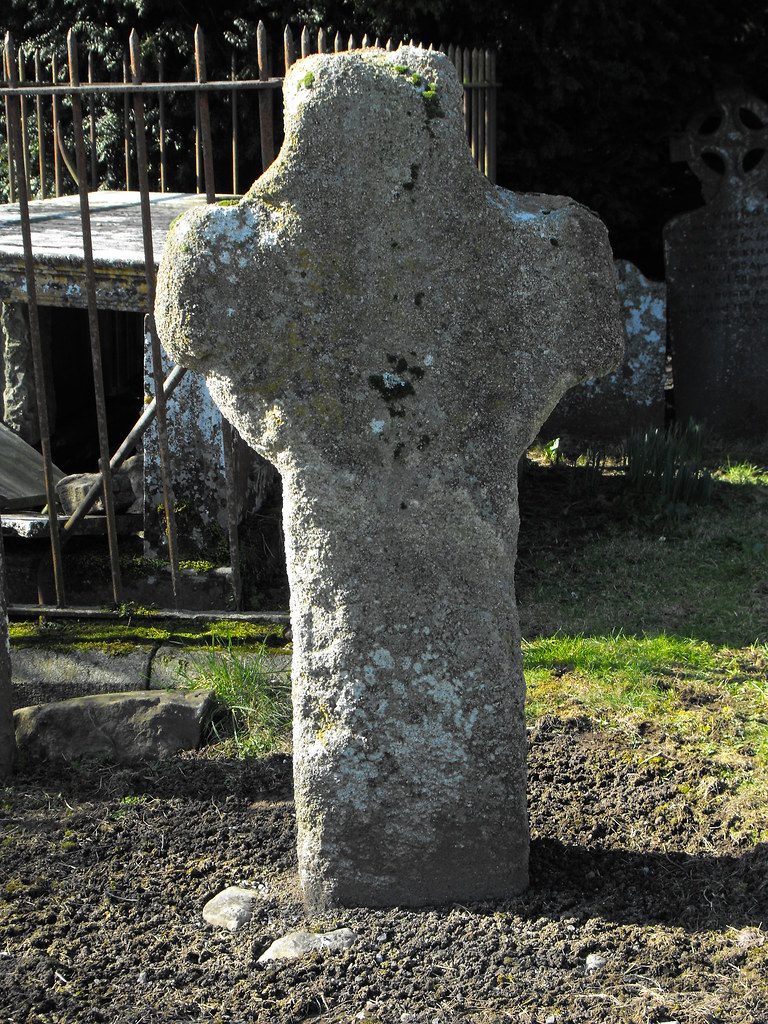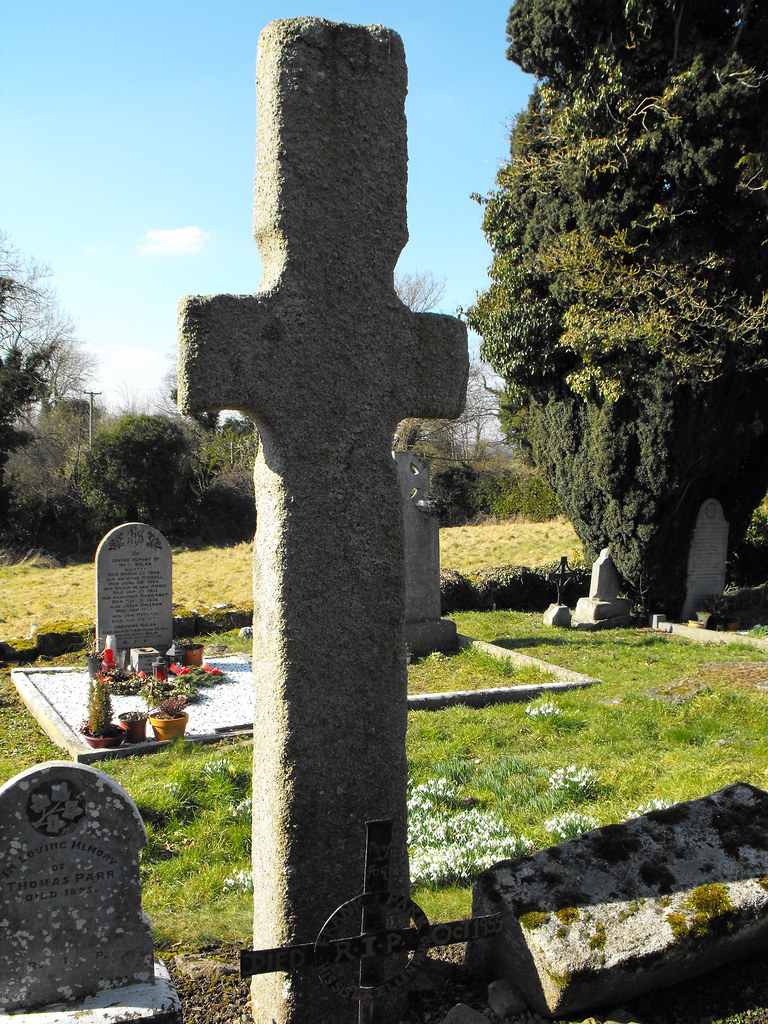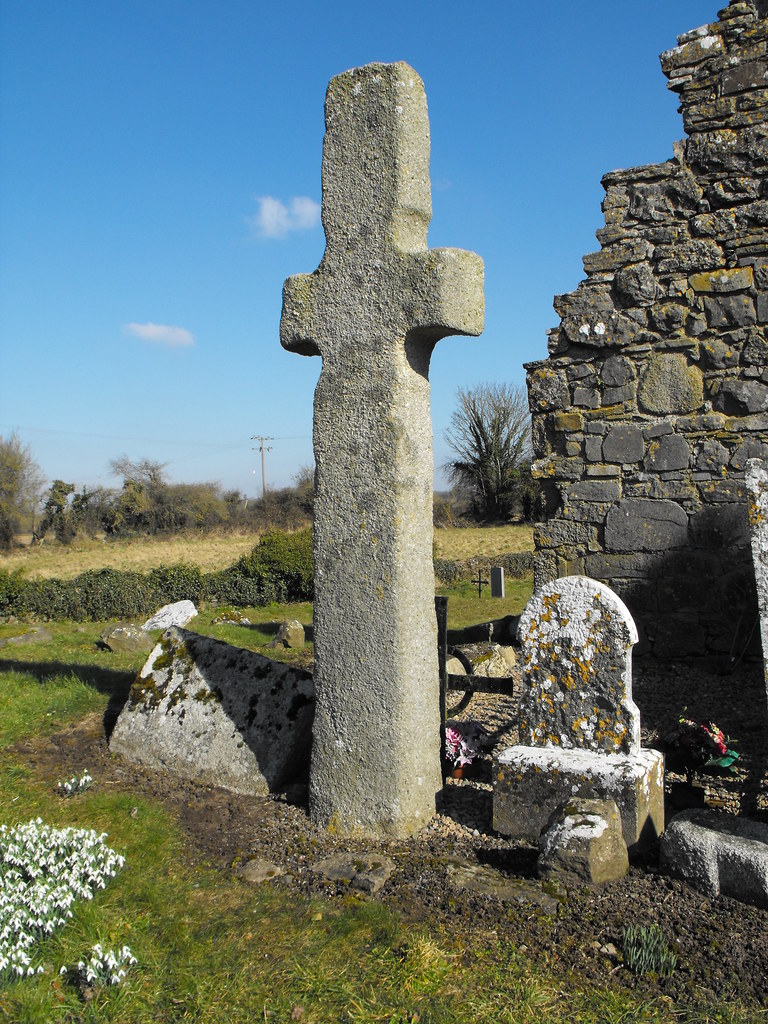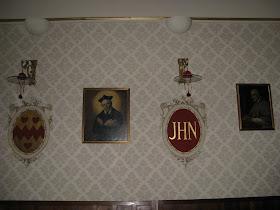I felt it my duty while browsing in a charity bookshop last week to pick up a battered prayerbook, sitting forlornly on the shelves. It turned out to be a 1941 edition of Saint Anthony's Treasury, a volume still in print, although like many classic prayerbooks (the Garden of the Soul comes to mind) it is not what it used to be. The 1941 edition, however, had a comprehensive selection of prayers to Irish saints, which, alas, have been gradually whittled down in successive editions. Below are the prayers in honour of Saint Brigid which I have reproduced exactly as they appear in the prayerbook:
1. A prayer composed in 1902 by Cardinal Moran.
2. A prayer whose source is unknown to me.
3. A Novena to Saint Brigid which remains in popular use.
4. A collect.
5. A Litany of St Brigid. The wording is slightly different to that found in the collection of litanies by Benjamin Musser O.F.M which circulates online. The Musser version also concludes with the collect above, whereas the version in St. Anthony's Treasury concludes with two different prayers.
Cardinal Moran's Prayer to St. Brigid
O Glorious St. Brigid, Mother of the Churches of Erin, patroness of our missionary race, wherever their lot may be cast, be thou our guide in the paths of virtue, protect us amid temptation, shield us from danger. Preserve to us the heritage of chastity and temperance; keep ever brightly burning on the altar of our hearts the sacred Fire of Faith, Charity, and Hope, that thus we may emulate the ancient piety of Ireland's children, and the Church of Erin may shine with peerless glory as of old. Thou wert styled by our fathers " The Mary of Erin," secure for us by thy prayers the all-powerful protection of the Blessed Virgin, that we may be numbered here among her most fervent clients, and may hereafter merit a place together with Thee and the countless Saints of Ireland, in the ranks of her triumphant children in Paradise. Amen.
Prayer to St. Brigid
Dear St. Brigid, brilliant star of sanctity in the early days of our Irish faith and love for the omnipotent God Who has never forsaken us, we look up to you now in earnest, hopeful prayer. By your glorious sacrifice of earthly riches, joys and affections obtain for us grace to "seek first the Kingdom of God and His justice" with constant trust in His fatherly care. By your life of laborious charity to the poor, the sick, the many seekers for light and comfort, obtain for us grace to be God's helpers to the utmost of our power during our stay on earth, looking forward, as you did, to our life with Him during eternity. By the sanctified peace of your death-bed, obtain for us that we may receive the fulness of pardon and peace when the hour comes that will summon us to the judgment seat of our just and most merciful Lord. Amen.
Novena to St. Brigid
Foundress of Religious Women in Ireland
(To begin on the 23rd January)
O Glorious St. Brigid, Patroness of Ireland and Mother of the Churches, protect the Irish Church and preserve the true Faith in every Irish heart, at home and abroad. Obtain for us the grace to walk faithfully in the path of Christian perfection during life, and so to secure a holy and happy death, with life everlasting, in thy blessed company, through Jesus Christ, our Lord. Amen.
Prayer to St. Brigid
Patroness of Ireland
(Feast, February 1st.)
O God, Who givest us joy by the power of the intercession of Blessed Brigid the Virgin, graciously grant that we may be assisted by her merits by the example of whose chastity we are enlightened. Through Christ our Lord. Amen.
Litany of St. Brigid
(For private recitation only.)
Lord, have mercy.
Christ, have mercy.
Lord, have mercy.
Eternal Father, have mercy on us.
Divine Son, have mercy on us.
Holy Spirit, have mercy on us.
Holy Mary, Virgin of Virgins, Pray for us.
Blessed St. Brigid, Pray for us.
Consecrated spouse of the King of Kings, Pray for us.
Corner-stone of the Monastic Institute in the Island of Saints, Pray for us.
Brigid, Patroness of Ireland, Pray for us.
Model of Irish Virgins, Pray for us.
Mother of Religious, Pray for us.
Pattern of holiness, Pray for us.
Intercessor for the Irish clergy, Pray for us.
Mediatrix for the Irish people, Pray for us.
Protectress of the faith preached by St. Patrick, Pray for us.
Enjoying with him the clear vision of God, Pray for us.
Lamb of God, Who takest away the sins of the world: spare us, O Lord.
Lamb of God, Who takest away the sins of the world: graciously hear us, O Lord.
Lamb of God, Who takest away the sins of the world: have mercy on us.
Let us Pray
O God, the Author of all sanctity, grant that we who inhabit the Island of Saints, may, through the intercession of St. Brigid, walk in their footsteps on earth, and so arrive with them to the possession of Thee in Heaven. Through Jesus Christ our Lord. Amen.
Pour forth on us, we beseech Thee, O Lord, the spirit of Thy wisdom and love, with which Thou hast replenished Thy holy Servant, St. Brigid, that sincerely obeying Thee in all things, we may by a zealous imitation of her virtues, please Thee in faith and works. Through Jesus Christ our Lord. Amen.
St. Anthony's Treasury - A Manual of Devotions (Anthonian Press, Dublin, 12th edition, 1941), 275-278.
This post was first published here.
Saturday, 29 January 2011
Friday, 28 January 2011
The Standing Stone: Sleaty, Church and Crosses, Co. Laois.
After many months of absence I am glad to be back and contributing to this blog again after a turbulent end to 2010.
For this post I have selected a small church ruin North of Carlow town but inside County Laois. I particularly like this place because of the two early Christian crosses next to a much later ruin. You really get a sense of time here.
The original post can be read on 'The Standing Stone.'
Location – A few km north of Carlow town on the banks of the River Barrow.
OS: S 713 791 (map 61)
Longitude: 6° 56' 27.43" W
Latitude: 52° 51' 27.83" N
GPS: S 71327 79054 (Accuracy – 7m)
See map at the bottom of the page.
Description and History – The remains at Sleaty appear to be nothing out of the ordinary apart from the two early Christian crosses which betray its importance as the former residence of the Bishop of Leinster. This is a very early Christian foundation, of which only the two crosses remain. Associated with St. Fiacc the church is medieval in date, although some of the larger stones used in its construction may come from the earlier foundation. Large boulders were common in early Christian construction. The original monastery was on the other side of the river but when 60 monks died at the site (how I don’t know) it was moved to its present location. Aodh lived here in the 7th century who was one of the first biographers of St. Patrick. The last historical reference to the site is from 1055, after which the site lost importance.
For this post I have selected a small church ruin North of Carlow town but inside County Laois. I particularly like this place because of the two early Christian crosses next to a much later ruin. You really get a sense of time here.
The original post can be read on 'The Standing Stone.'
Location – A few km north of Carlow town on the banks of the River Barrow.
OS: S 713 791 (map 61)
Longitude: 6° 56' 27.43" W
Latitude: 52° 51' 27.83" N
GPS: S 71327 79054 (Accuracy – 7m)
See map at the bottom of the page.
Description and History – The remains at Sleaty appear to be nothing out of the ordinary apart from the two early Christian crosses which betray its importance as the former residence of the Bishop of Leinster. This is a very early Christian foundation, of which only the two crosses remain. Associated with St. Fiacc the church is medieval in date, although some of the larger stones used in its construction may come from the earlier foundation. Large boulders were common in early Christian construction. The original monastery was on the other side of the river but when 60 monks died at the site (how I don’t know) it was moved to its present location. Aodh lived here in the 7th century who was one of the first biographers of St. Patrick. The last historical reference to the site is from 1055, after which the site lost importance.
The medieval church is largely ruined and a stone font (date unknown) sits inside. The smaller of the two crosses from the earlier foundation is roughly 1.5m high and is decorated with a rough ringed cross. It is badly eroded and barely visible now. The second cross is 2.8m high and is undecorated. I had seen photographs of this cross before and you can’t really appreciate its size until you see it for yourself.
This is a nice little site and well worth the trip.
Difficulty – Easy enough to get around but it is set back from the road and easy to drive by without seeing. There is no parking here.
The churchyard from the roadway.
View The Standing Stone in a larger map
Sunday, 23 January 2011
Mass in the Church of St. Mary and the Angels
Instead of the annual pilgrimage to the Church of St. Paul on Dublin's Arran Quay, there was a Latin Mass in the Capuchin Church of St. Mary and the Angels just around the corner on Church St. It was held there because Ecclesia Dei - Ireland, another Latin Mass Association had had to postpone their 2010 AGM to 2011.











The foundation stone of the Church was laid on 12th June, 1868. It is build in a 14th century gothic style to the design of JJ McCarthy. It was dedicated in 1881 but not consecrated - there are no consecration crosses on the walls. JJ McCarthy was also responsible for St. Saviours (also 14th century gothic), Maynooth College Chapel, Mount Argus Church, Celbridge Parish Church and Kilcock Parish Church where the Latin Mass is sometimes celebrated.
The two side Altars to Our Lady and to St. Francis were installed in 1876. They were the work of Farrell and Sons, then of North Gloucester Street Lower (now Sean McDermott Street). Their most famous work in Dublin is the monuments to Archbishop Troy and Cardinal Cullen in the Pro-Cathedral, the statues of Sir John Grey and William Smith O'Brien on O'Connell St. and the sculptural aspects of Refugium Peccatorum in Rathmines.
A beautiful Sacred Heart Chapel used to run the length of the Church to the north. It was built in 1908-9 but was enclosed and converted into a large sacristy and parish hall a few years ago.



Queen of Angels, pray for us!











The foundation stone of the Church was laid on 12th June, 1868. It is build in a 14th century gothic style to the design of JJ McCarthy. It was dedicated in 1881 but not consecrated - there are no consecration crosses on the walls. JJ McCarthy was also responsible for St. Saviours (also 14th century gothic), Maynooth College Chapel, Mount Argus Church, Celbridge Parish Church and Kilcock Parish Church where the Latin Mass is sometimes celebrated.
The two side Altars to Our Lady and to St. Francis were installed in 1876. They were the work of Farrell and Sons, then of North Gloucester Street Lower (now Sean McDermott Street). Their most famous work in Dublin is the monuments to Archbishop Troy and Cardinal Cullen in the Pro-Cathedral, the statues of Sir John Grey and William Smith O'Brien on O'Connell St. and the sculptural aspects of Refugium Peccatorum in Rathmines.
A beautiful Sacred Heart Chapel used to run the length of the Church to the north. It was built in 1908-9 but was enclosed and converted into a large sacristy and parish hall a few years ago.



Queen of Angels, pray for us!
Saturday, 22 January 2011
Beatification Report - Bl. John Henry Newman Shrine and Exhibits
As part of its celebrations of the beatification of its founder, Cardinal John Henry Newman , the Birmingham Oratory opened its shrine dedicated to Newman.
The first pilgrim to pray at the shrine was the Holy Father, who visited the Oratory following the beatification Mass. Formerly St Phillip's Chapel, it was refurbished before being rededicated to Newman. The refurbishment was carried out by International Fine Art Conservation Studios and consisted of laying a new floor and some redecoration whilst preserving older decoration in some areas. The new elements echo the Oratory's baroque style and include stencilled designs.


The Shrine contains a number of relics taken from Newman's grave. Over the altar hangs a copy of Walter Ouless's portrait of Newman, the original of which is in the possession of the Oratory.


A considerable amount of work has clearly gone into the detail of the shrine. A particularly nice touch is design of the lamps to resemble a Cardinal's galero.
Since its opening the shrine has played host to many other pilgrims following in the Holy Father’s footsteps. Some have emulated him by admiring another of the Oratory’s increasingly famous residents, Pushkin. Pushkin is a delightful black Persian cat that has risen to fame since he was featured across the media as the recipient of the Pope’s attention and now even gets his own fan mail.



For those able to visit, the shrine is open whenever the Church is, usually before and after Mass, Saturday and Sunday. A pilgrims’ Mass is held in the shrine at 11am on Saturday mornings.

The Birmingham Oratory’s shrine is one of many erected or commissioned over recent months in memory of Newman; these include the London (Brompton) Oratory and Oxford Oratory as well as places as far afield as New York.

Also at the Oratory is a small exhibition of Newman’s personal items (generally only open at weekends). It features information about Newman’s life largely taken from some very effective poster versions of sections from Father Beaumont’s official beatification biography, a very interesting book. Hopefully soon the displays will be augmented with the items from the Newman Exhibition at the Birmingham Museum, as this featured some truly stunning pieces, photographs of which can be seen here.



This is the conclusion to my series of reports about Cardinal John Henry Newman, his beatification and the events that took place as part of its celebration; links to the earlier posts are listed below. As there are already reports of a second miracle being investigated it appears we may reasonably be hopeful that the sequel to this series may be appearing in the not too distant future!
Life of John Henry Newman
Newman and Birmingham Lecture
Cardinal Newman Exhibition
JH Newman and his Biographers, Official Beatification Conference
Beatification of Cardinal Newman
Newman the Authorised Biography


